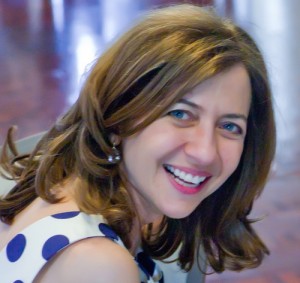 Cathryn Prince is a journalist and award-winning author of historical nonfiction—her most recent work, Queen of the Mountaineers: The Trailblazing Life of Fanny Bullock Workman, will be released on May 7th. This biography explores the life and adventures of the pioneering Fanny Bullock Workman, a woman whose ambition, passion, and determination changed the face of mountain exploration.
Cathryn Prince is a journalist and award-winning author of historical nonfiction—her most recent work, Queen of the Mountaineers: The Trailblazing Life of Fanny Bullock Workman, will be released on May 7th. This biography explores the life and adventures of the pioneering Fanny Bullock Workman, a woman whose ambition, passion, and determination changed the face of mountain exploration.
Stephanie Cheslock has been a beta-reader for Swenson Book Development LLC the past year and this is her first blog post. She interviewed Cathryn Prince after reading an Advance Review Copy of Queen of the Mountaineers.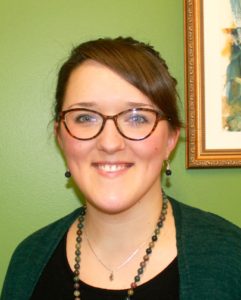
Stephanie Cheslock: Fanny Bullock Workman, the pioneering woman mountain climber, is a fairly obscure topic. How did you discover her and decide to write her biography?
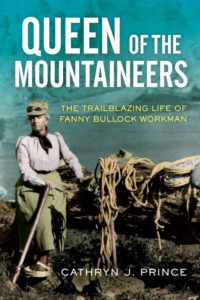 Cathryn Prince: I wanted to write about a woman who was a pioneer in her field, who defied social conventions, whose story had been lost to history, and who had a story that would resonate today. So when I stumbled on Workman’s story I was delighted. The more I read, the more intrigued I grew. So many facets of her life resonate today: her personal ambition, her decision to have children and how that fit into her pursuit of her passion (which she turned into a career), the way her rivalry with another female American mountain climber played out in the media. So many of the issues Workman faced are issues women wrestle with today: including the way strong, ambitious women are judged differently than men. Ultimately Workman wanted to be judged on her achievements: no more no less.
Cathryn Prince: I wanted to write about a woman who was a pioneer in her field, who defied social conventions, whose story had been lost to history, and who had a story that would resonate today. So when I stumbled on Workman’s story I was delighted. The more I read, the more intrigued I grew. So many facets of her life resonate today: her personal ambition, her decision to have children and how that fit into her pursuit of her passion (which she turned into a career), the way her rivalry with another female American mountain climber played out in the media. So many of the issues Workman faced are issues women wrestle with today: including the way strong, ambitious women are judged differently than men. Ultimately Workman wanted to be judged on her achievements: no more no less.
SC: Queen of the Mountaineers and American Daredevil are both about adventurers. Do you consider yourself an adventurer? Do you hike or climb?
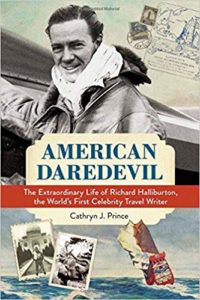 CP: I love adventure, though I’m certainly not on the level of either Richard Halliburton or Fanny Bullock Workman – I’ve not swum the Panama Canal, leapt into a cenote, bicycled the length of India, or fended off robbers with a pistol on a dusty road in Algeria. The highest I’ve hiked is just below 10,000 feet high in Guarda, Switzerland. Still, I love the unknown. It’s partly what motivated me to become a journalist and author. It takes me to where the stories are, to places I’d otherwise never go—be it walking the length of an unfinished tunnel during Boston’s Big Dig or standing in the mud to report on cow fights in Switzerland. I love traveling, whether to Vietnam or Cracow, to the Shenandoah Valley or Maine.
CP: I love adventure, though I’m certainly not on the level of either Richard Halliburton or Fanny Bullock Workman – I’ve not swum the Panama Canal, leapt into a cenote, bicycled the length of India, or fended off robbers with a pistol on a dusty road in Algeria. The highest I’ve hiked is just below 10,000 feet high in Guarda, Switzerland. Still, I love the unknown. It’s partly what motivated me to become a journalist and author. It takes me to where the stories are, to places I’d otherwise never go—be it walking the length of an unfinished tunnel during Boston’s Big Dig or standing in the mud to report on cow fights in Switzerland. I love traveling, whether to Vietnam or Cracow, to the Shenandoah Valley or Maine.
SC: What was your favorite part of researching and writing this book?
 CP: I loved spending time in the National Archives of Scotland in Edinburgh. I’d get situated at a reading table just as the sun’s rays washed over Arthur’s Seat. Incidentally, Benjamin Silliman, who I wrote about in A Professor, A President and a Meteor, often climbed the small peak studying in Scotland. I relished reading and deciphering Fanny’s handwriting, finding little “treasures” in the pages of her journals, a tiny silk American flag here, pressed flowers there, and going through boxes of photographs. One of my favorite parts of the research was reading about her accounts of her ascent Pinnacle Peak, her cycling trip through India, and the climb where she unfurled her “Votes for Women” banner. I felt a sense of poignancy when I came to some her last journal entries when she didn’t know she’d soon retire from climbing (because of WWI and subsequent health problems), but I did. Another part of research I love is making connections with various experts, scholars, and those in the antiquarian book business.
CP: I loved spending time in the National Archives of Scotland in Edinburgh. I’d get situated at a reading table just as the sun’s rays washed over Arthur’s Seat. Incidentally, Benjamin Silliman, who I wrote about in A Professor, A President and a Meteor, often climbed the small peak studying in Scotland. I relished reading and deciphering Fanny’s handwriting, finding little “treasures” in the pages of her journals, a tiny silk American flag here, pressed flowers there, and going through boxes of photographs. One of my favorite parts of the research was reading about her accounts of her ascent Pinnacle Peak, her cycling trip through India, and the climb where she unfurled her “Votes for Women” banner. I felt a sense of poignancy when I came to some her last journal entries when she didn’t know she’d soon retire from climbing (because of WWI and subsequent health problems), but I did. Another part of research I love is making connections with various experts, scholars, and those in the antiquarian book business.
SC: This book is an in-depth look at Workman’s life and adventures, what did your research process look like?
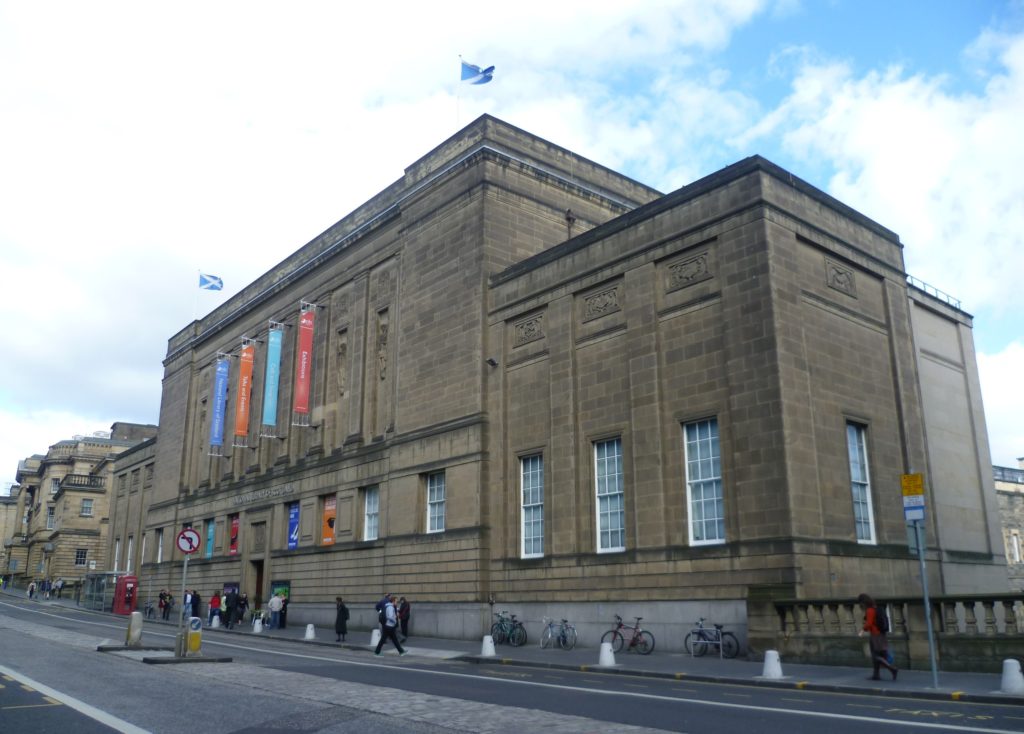 CP: I do a fair amount of research before starting on the book proposal, which I’ve learned to use as my map once I actually begin the manuscript. For this book I began by spending time in Brooklyn College where the Annie Peck collection is housed. I read all of her books and articles. Once I had the proposal complete I traveled to Scotland to spend time at the National Library of Scotland, where the Workman collection is housed. I made contact with Alpine Clubs in the US and Britain. Old photographs, maps, and newspaper accounts were essential. It meant reading guidebooks of the time period and articles on women and traveling, getting to understand mountain climbing gear, and women’s issues. Additionally, I found it necessary to check in with current climbers to get a perspective on how things have changed over the decades.
CP: I do a fair amount of research before starting on the book proposal, which I’ve learned to use as my map once I actually begin the manuscript. For this book I began by spending time in Brooklyn College where the Annie Peck collection is housed. I read all of her books and articles. Once I had the proposal complete I traveled to Scotland to spend time at the National Library of Scotland, where the Workman collection is housed. I made contact with Alpine Clubs in the US and Britain. Old photographs, maps, and newspaper accounts were essential. It meant reading guidebooks of the time period and articles on women and traveling, getting to understand mountain climbing gear, and women’s issues. Additionally, I found it necessary to check in with current climbers to get a perspective on how things have changed over the decades.
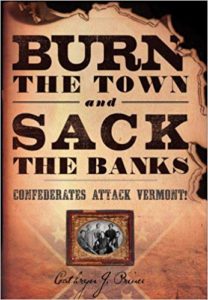
SC: What, if anything, was different about writing this book compared to your previous works?
CP: It resembled Burn the Town in that no one directly involved in the subject is alive. It resembled American Daredevil in that I was writing about someone who defied social conventions to pursue their passion, which they then turned into a career. The biggest difference was this is the first time I focused on a woman. I also gave myself two years to work on the book as opposed to one year. I found that really helped because I was able to let it simmer from time to time.
SC: If you had to pick one fact or anecdote to share with our readers about Workman, what would it be?
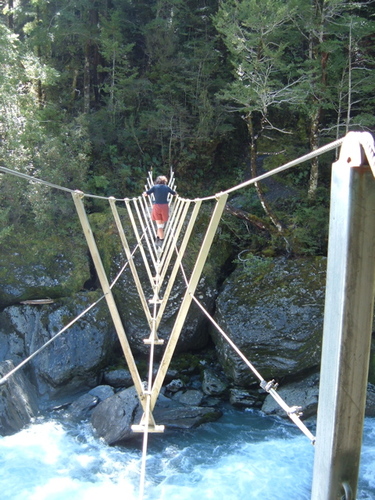 CP: That’s a tough question. I’d say the time she crossed a rope bridge 250 feet in length, high above a roaring river. It was a simply constructed bridge. Picture a tightrope with rope handrails. The whole thing sways side to side and sort of ripples up and down as you walk on it. As she wrote “One feels as if four pairs of hands would not be enough to make one secure. However, with a cool head and patience over a first crossing can be affected without much unnerving of a person accustomed to precipices or troublesome places.” That quote so perfectly sums up Workman’s character. She had a dry wit, was not easily frazzled, and just got on with the task at hand.
CP: That’s a tough question. I’d say the time she crossed a rope bridge 250 feet in length, high above a roaring river. It was a simply constructed bridge. Picture a tightrope with rope handrails. The whole thing sways side to side and sort of ripples up and down as you walk on it. As she wrote “One feels as if four pairs of hands would not be enough to make one secure. However, with a cool head and patience over a first crossing can be affected without much unnerving of a person accustomed to precipices or troublesome places.” That quote so perfectly sums up Workman’s character. She had a dry wit, was not easily frazzled, and just got on with the task at hand.
SC: In addition to history, what are some of your favorite subjects?
CP: I enjoy Greek and Roman mythology and anything to do with evolution, flight, and the solar system – albeit on a layperson’s level.
SC: As a seasoned writer and professor, do you have any advice or aspiring writers and journalists?
CP: Read. Read good works and bad works, but just read. And write. I teach journalism and I keep reminding my students they are entering the profession at a vital time. Whether they cover culture or local politics, journalism is key to democracy.
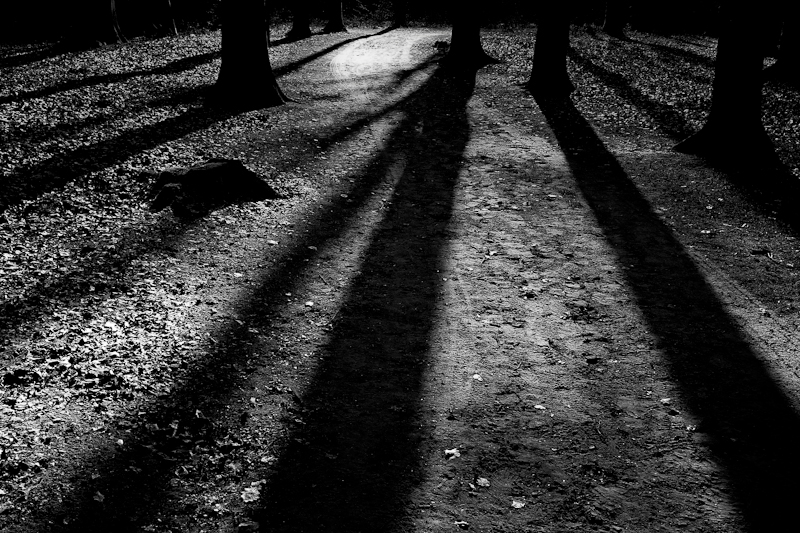 SC: The tagline on your website is “Keeping History Fresh.” Tell me a little about this. What does that mean to you and why is it so important?
SC: The tagline on your website is “Keeping History Fresh.” Tell me a little about this. What does that mean to you and why is it so important?
CP: For me it means casting light on people and events that remain in the shadows. If journalists write the first draft of history, historians and others can put it in more context. I do subscribe to the notion that to understand the times in which we live, we need to know our history.
SC: Your bio says you have a husband, two children, and a dog—what is your dog’s name?
CP: We now have two dogs, Juno a yellow lab, and Loki, a black lab puppy who we just welcomed home.
SC: The book doesn’t come out until May 7th, but do you already have your next project in the works?
CP: I am only at the earliest stage of research I can tell you it will be Vietnam in the era of 1963-1965.
With Women’s History Month underway there is no better time than now to celebrate the wonderful and pioneering women of today and yesterday—preorder your copy of Queen of the Mountaineers: The Trailblazing Life of Fanny Bullock Workman today.

This sounds fascinating! I know I’ll love it. Thanks to both of you.